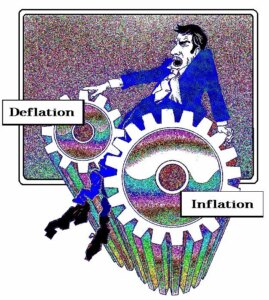Welcome to Extreme Investor Network, where we provide unique insights and valuable information on all things economics. Today, we’re tackling the complex topic of deflation and inflation, shedding light on the intricacies that often go unnoticed.
Many people struggle to grasp the concept of a deflationary spiral, often mistaking rising prices for inflation. However, the truth is that inflation and deflation are not always as straightforward as they seem. Take, for instance, the phenomenon of stagflation – a scenario where rising prices coincide with economic contraction, leading to a decline in disposable income and economic growth.
In the 1970s, following the OPEC oil price hikes, prices surged, but this was not a sign of economic prosperity. Instead, it marked the onset of stagflation, where escalating costs in one sector overshadowed spending in others, resulting in a stagnating economy. This is a crucial distinction to remember, especially when policymakers propose solutions like wage hikes and price controls without addressing underlying systemic issues.
While it may sound appealing to advocate for wage increases and lower prices, the reality is far more complex. In the realm of economics, actions have consequences, and mere rhetoric without a comprehensive strategy is bound to fall short. Lowering taxes, reducing government waste, and tackling corruption are essential steps toward fostering sustainable economic growth and prosperity.
Furthermore, it’s essential to understand the nuances of deflation and stagflation. Deflation is not just about falling prices; it encompasses a broader decline in economic activity that can manifest in different ways, including stagflation. During periods of stagflation, where prices rise but buying power diminishes, consumers feel the pinch as they spend more on essentials like gas and groceries while cutting back on discretionary purchases.
As we navigate the complexities of the current economic landscape, it’s crucial to stay informed and vigilant. By looking beyond surface-level price fluctuations and examining the broader economic indicators, we can make more informed decisions and mitigate the risks associated with deflation and inflation.
At Extreme Investor Network, we’re committed to providing you with expert analysis and unique insights that go beyond the surface. Stay tuned for more in-depth discussions on economics, finance, and investment strategies that can help you navigate today’s dynamic market conditions with confidence and knowledge.

